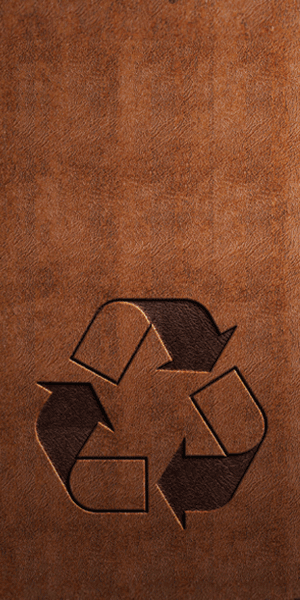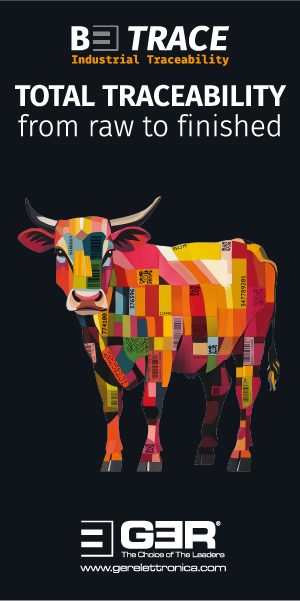No contest

The price of leather is at its most affordable for years and footwear producers shopping in the lower-quality range of the upper materials market have the option to bring a beautiful, renewable, high-performing material back into their collections. And because millions of hides are now going to waste, to save them from that fate and use them would also offer shoe companies a huge boost to their sustainability credentials.
During the first ten months of 2020, US wet-salted hides cost importers around the world an average of $31.40 per piece. In the same period a year earlier, the average price was $38.95, more than $7.50 more. A year before that, the price was $49.78 and in 2017, for the same months, the average export price for US wet-salted hides was $61.69 per piece. The price has fallen by almost 50% in three years. Hide prices may go up again in 2021, but in 2020, they were cheap.
Every other Tuesday, we publish an exclusive market intelligence report in our Leatherbiz Weekly online newsletter. Consistently, these reports have made it clear that some tanners and their customers in certain finished-product segments have moved to take advantage of the situation. Upholstery leather manufacturers, particularly in China, and furniture producers, again in China, have made the most of this opportunity. Side leather tanners and footwear manufacturers seem to have been more reluctant to seize the day.
Five billion pairs vanish
There are many layers in the explanation of this. At an obvious level, people have had to spend more time at home this year than they were expecting, because of covid-19. Some will have decided to invest in new furniture to make the environment as pleasant as possible. The corollary is that fewer trips outside to the office, to restaurants, to meet clients, to attend events and so on have meant a diminished need for new footwear. Why buy new shoes if no one is going to see you wearing them and if a lack of use has made your old ones last longer? On top of that, shops spent weeks on end with their doors closed to customers owing to restrictions imposed by governments that were working to combat the pandemic (this affected most other product categories, too, of course).
Certainly, according to the calculations of the chief executive of a leading footwear technology provider, the global shoe market shrank by 5 billion pairs in 2020. Soling machinery developer Desma has installed and maintains its technology in shoe factories all over the world. Its chief executive, Christian Decker, puts the size of the market for 2019 at 22.75 billion pairs, but he says the market fell by 22% in 2020 to 17.75 billion pairs of shoes, boots, sandals and so on, taking footwear back 10 or even 15 years in terms of market size.
The end of the affair
It is not just covid-19, though. Look more deeply and it is easy to see that the mainstream footwear industry’s millennia-old love affair with leather has been going through a problematic patch for some time. Knitted uppers made using synthetic yarn, bio-based alternative materials and, of course, plastic are all playing a part in displacing leather as the material of choice for a number of footwear brands and for consumers. It is easy to find examples of manufacturers of these materials claiming that what they offer is more sustainable than leather. It is still second-nature for leather industry people to shout these alternative materials down and point out the flaws in the arguments that their manufacturers put forward against leather. This is not a difficult task.
Mexican entrepreneurs Adrián López Velarde and Marte Cázarez are friendly and responsive and appear to be attracting a high level of interest in their cactus-based material, Desserto. In July, it won a finalist’s prize in the 2020 LVMH Innovation Award. On making the announcement, LVMH said: “The fashion industry is looking for high-quality vegan alternatives to leathers that can be produced in large capacity.” In October, Desserto won gold in Australia’s Good Design Award Fashion Impact competition. Footwear companies are among those who have taken note of these achievements and have made enquiries about testing and sourcing the material.
Unslain myths
What the entrepreneurs say, though, is a repeat of many of the myths that leather industry commentators probably believed they had slain long before now. Leather is bad, the Desserto founders suggest, because the fashion industry in general creates a high volume of waste and leather is a staple of the fashion industry. Leather is bad because it comes from cows and cows drink water [the connection between saving water and deciding to send the hide of a slaughtered cow to landfill rather than turn it into leather remains a mystery]. Leather is also bad because “it’s treated with toxic chemicals that hurt the environment” [cue images of the pit-dyeing of skins in Morocco as part of the promotional video that Desserto showed at a footwear event in November]. They went on to say that finding a replacement for leather would mean “less harm to cows” [this suggests that if brands use cactus instead of cattle hides abattoirs will become less busy; those who want fewer head of cattle in fields and fewer animals at abattoirs need to talk to the meat and dairy sectors]. They also criticised alternative materials that are already on the market for being made from plastic, which, they pointed out “doesn’t breathe, contains toxic chemicals and is bad for the environment”.
They searched for plant-based materials to use instead and worked out a patented process that uses the fibres from nopal cactus leaves to produce the dyeable, cuttable material that has caught the eye of LVMH and others. They say this material will last for “up to ten years”. When we asked Adrián López exactly what the finished article consists of, he kindly pointed us to a briefing document that the company has made public. This makes it clear that Desserto contains a maximum of 55% nopal fibres. The rest is polyurethane, although the company points out that the polyurethane is “partially made from biological compounds”.
Meritocracy
In the face of arguments like these, there seems to be have been a shift in the mood among some in the leather industry. Confrontation has not worked. Politely pointing out that a refusal to use the hide of a cow to make leather does nothing to lower the animal’s consumption of water during its life is another option, but this has not worked either. Getting to know one another a little and engaging in dialogue may be a better way.
Speaking at the same November footwear conference as Desserto, the secretary general of COTANCE, the leather industry’s representative body in the European Union, Gustavo González-Quijano, said he thought it was wrong to play one material against another. He believes manufacturers of all materials must do their best to deliver their products as sustainably as possible and promote each one truthfully and accurately. “Every material has its merits and we have to make the best materials we can and promote each one on its own merits,” he says.
He has a warning for the makers of alternative materials who use sustainability as a basis for trying to persuade leather buyers to change tack. He insists that tanners can be proud because leather “is the oldest circular-economy product you could find”. To set out to entice brands and consumers away from leather is to put these sustainability-conscious start-ups in danger of making the problem of waste worse, even if indirectly. “People eat meat,” he points out, “and hides are produced, and we can either use those hides or waste them. If we waste them, we have to manage that waste."
Plastic is the problem
Many of the new materials, including those made from fibres from pineapple, mycelium and apple, as well as cactus of course, are still constrained by a series of issues, ranging from proof of concept to scale of production. Perhaps they have a prosperous future ahead of them, and perhaps not. Today, most of the competition that leather faces is not from them, but from rolls of plastic. If you let your imagination run wild, this plastic can sometimes look a tiny bit like leather. Manufacturers take advantage of this to try to win business from tanners. The China Leather Industry Association said recently that, taking into account only products that were made in China as substitutes for leather, manufacturers there produced 34 billion square-metres of these materials in 2019. That’s 15 times more than total annual leather production across the globe.
ISA TanTec has made it clear that it wants to increase its challenge to these plastic substitutes. It wants a new division called Creation of Sustainable Materials to compete, not with its own main product, leather, but with plastic. “We are not saying that this is an alternative to leather,” founder, Tom Schneider, has told World Leather. “No. Absolutely not. I don’t want to have an alternative to leather. I want to have an alternative to the vegan materials, to the polyurethane stuff.”
If some footwear manufacturers seek materials that do not derive from animals, Mr Schneider has decided to try to supply it to them. He does not believe that this decision undermines his commitment to producing responsibly made leather. He will continue to make leather, and in much larger volumes, often for the same footwear companies. He is convinced that, if he can persuade them to use less polyurethane and polyvinyl chloride in the niche collections to which they want to attach a vegan label, it will be a good for the sustainability credentials of those shoe producers. To avoid leather and use plastic in its place would do the opposite.
No contest
Someone who is convinced that, at the moment, shoe companies could find no more sustainable material than leather is Veronica Bates Kassatly, a London-based consultant and an ex-World Bank financial analyst and economist. Her specialism is carrying out independent analysis of the sustainability claims of brands and of bodies such as the Sustainable Apparel Coalition (SAC), the organisation behind the Higg Materials Sustainability Index (MSI). She has been one of a number of commentators who have criticised the MSI loudly in recent months after an update to the index showed increased favouritism towards fossil-fuel based synthetics over natural materials, including leather. If she detects greenwashing, Ms Bates Kassatly calls it out without fear or favour.
In her recent writing, she has provided sharp critiques of the cotton, silk and polyester value chains. She has flagged up a lack of clarity over organisations’ use of lifecycle analysis (LCA) studies. There is more than one type of LCA, she points out, and unless LCA studies have been produced with the same boundaries and methodologies, using them to compare different products, different companies, different materials makes no sense. Some of her main complaints about the Higg Index are that nobody is allowed to see the data or methodologies; it was not developed by the scientific community and has never been subject to peer review.
When she found out that the leather industry had joined counterparts from other sectors, including silk and alpaca wool, in expressing dismay at their treatment from the SAC, she made enquiries. After a discussion with the Leather and Hide Council of America, she concluded that the Higg Index score for leather is “completely wrong out of the starting gate”.
The score is based on hides having a value of 3.6% of the total economic worth of the cow at a time when the real share of US hides has been hovering below 1%. And it was when she found out that 5.5 million US hides went to waste in 2019 that she concluded that there is no more sustainable material that shoe companies could choose than leather. Specifically, what she said was: “The most sustainable shoe fibre at present is leather from low-quality hides. No contest.”
She specifies low-quality hides because these are the ones that have gone to landfill or incineration; higher-quality ones have continued to find buyers. Some in the leather industry are convinced packers only have themselves to blame for hides going to waste. Had they lent their weight and money to recent campaigns to promote leather, a higher number of mainstream footwear brands may have resisted the temptation to put plastic in their shoe uppers instead. The meat companies chose not to do this and have watched as hide prices fell (see the figures above) as a result of demand for leather diminishing, to the extent now that all these millions of hides have gone to waste. And the hides keep coming because cattle slaughter rates in the US remain at more than 650,000 head every week.
Veronica Bates Kassatly sees it clearly: footwear brands that really are serious about sustainability should choose to use leather made from the lower-quality range of these hides in their forthcoming collections. The material is cheap, long-lasting, versatile, beautiful, natural, renewable, available, tried and tested, sustainable and circular. To choose it would be to save huge volumes of useful raw material from going to waste. To use it would mean there would be less need to use environmentally inimical synthetic substitutes deriving from fossil fuels. She’s right: there is no contest.
Fine, sustainable material is available to footwear companies at a favourable price. And if they choose leather made from lower-quality hides, they can save the material from going to waste, the way 5.5 million pieces did in the US in 2019.
Credit: Deichmann






























